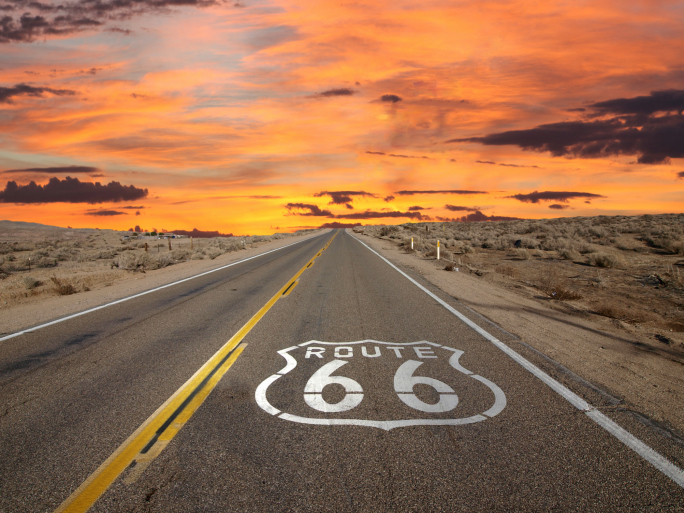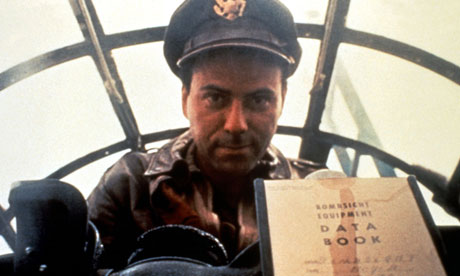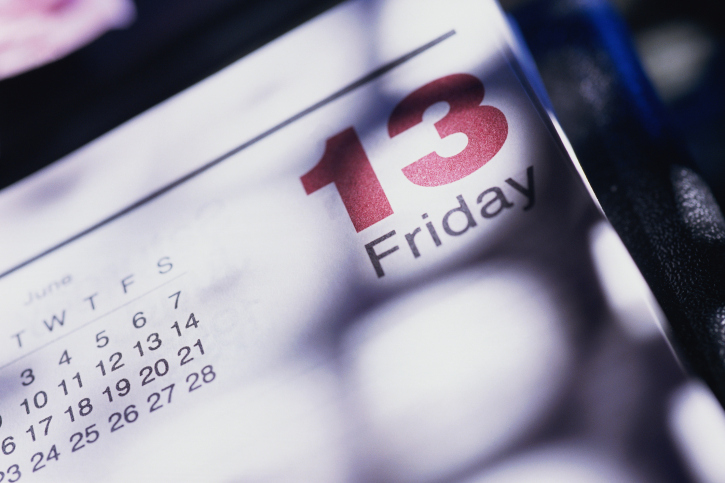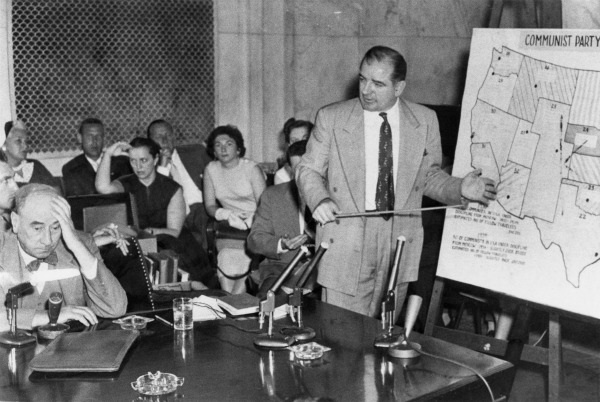Numbers factor into everything. Some numbers have become so well-known that nobody questions where they came from or how they became so important.
数字无处不在。有些数字广为人知,成为生活中再平常不过的代号,人们甚至都无意追溯其缘起。
10.66号公路
It's known as America's Main Street. It's the place where you can get your kicks. Running from Chicago to Los Angeles, Route 66 is an icon of Americana, whisking travelers across the nation's heart. The road was decommissioned in 1985, but it still holds a mythical place in American culture.
66号公路从芝加哥一路横贯到洛杉矶,被称为"美国主干线",是美国文化的象征之一。它让无数旅行者蠢蠢欲动,吸引人们驾车驰骋,穿越这个民族的心脏,探寻其魅力。1985年,66号公路被迫退役,虽已不复见于公路地图,但其传奇般的过往仍在美国文化中举足轻重。

So why 66? Why not 12, or 384? Let's go back to the beginning. In 1917, Wisconsin became the first state to prohibit the marking and naming of roads without the approval of the government. Previously, it was common for roads to be sponsored by motor clubs, private companies, and tourist boards, who would choose the route that best suited them—regardless of whether it was the best or quickest path for motorists. To replace this confusing system, Wisconsin's State Highway Commission developed an efficient layout of numbered highways, an innovation that was quickly adopted across the country. In 1925, St. Louis was selected as the hub for four major highways traveling across the US. None of them was supposed to be numbered 66. Instead, Routes 40, 50, and 60 would run east/west, while Route 61 would travel north/south. But the plan hit a bump when Kentucky demanded the name Route 60 for the highway between Virginia Beach, Virginia and Springfield, Missouri (which ran right through Kentucky). The reason? Kentucky was the only state in the Missouri Valley without a road that ended in zero. Really, it was that petty. The original plan was for Route 60 to run between Chicago and Los Angeles, but Kentucky suggested that this could be renamed Route 62. The Bluegrass State got their way, but other state highway agencies weren't enthusiastic about the Route 62 name—they wanted something more memorable. After noticing that the number was still available, Midwest agency members Cyrus Avery and B.H. Piepmeier sent a letter to the Bureau of Public Roads simply stating, "We prefer 66 to 62." And that was that—the most famous road in the United States got its name after a silly fight over numbers ending with zero.
那么问题来了,为什么要叫"66号公路",而不是"12号公路"或者"384公路"呢?让我们回到最初来一探究竟。1917年,威斯康星州成为第一个通过"未经政府允许,不得给公路标号或命名"法案的州。在此之前,公路名称一般都由汽车俱乐部、私人公司或旅游局来命名,这些机构选择最适合他们宣传的公路予以赞助,而不考虑这条路对于车主来说是不是最好、最快、最便捷。所以,为了取代这些纷繁复杂的公路系统,威斯康星州公路委员会规划以数字命名公路,这一创举迅速被其他州所借鉴。1925年,圣路易斯被选为横跨美国的四大主要公路网的中心枢纽。起初,人们完全没有考虑66这个数字,而是计划用60命名东西向的那条公路,用61命名南北向的那条公路,用40和50命名另外两条公路。但是,由于肯塔基州要求以60命名穿过肯塔基州的那条公路,于是计划泡汤。为什么肯塔基想要60呢?因为在密苏里谷,肯塔基是唯一一个没有以0结尾公路的州。没办法,谁让肯塔基州规模小呢。最初的计划是将芝加哥到洛杉矶的洲际公路编号为60,但是肯塔基州想给经过自己州的公路编号60,所以提议将这条公路改名为62。牧草州(美国肯塔基州别名)一意孤行,可其他州并不买账,大家都想要一个更具纪念意义的编号。意识到彼此相执不下也不能解决问题,中西部地区的代理成员Cyrus Avery和B.H. Piepmeier给国家公共道路管理局写了一封信,说"我们不喜欢62,给我们66吧"。于是,在一场激烈的"抢零风波"后,伟大的66号公路就这样诞生了!
9.第22条军规

"Catch-22" is a common phrase in English-speaking countries. It can defined as "a paradox in which the attempt to escape makes escape impossible." The term comes from Joseph Heller's classic novel of the same name, although its popularity as a phrase didn't really take off until the 1970 movie came out. In the book and movie, the phrase refers to an Air Force ruling that only a crazy person would make an extremely dangerous bombing run without trying to get out of it. Any pilot who doesn't try to get out of it is clearly deranged and therefore qualifies for immediate medical leave on the grounds of insanity. However, anyone who asks not to make the run must be sane (since trying to get out of danger is the sign of a rational mind) and therefore any pilot who requests medical leave for insanity cannot be granted it. Either way, every pilot has to make the run. Catch-22.
"Catch-22"在英语国家是个常用短语,用来形容"自相矛盾、不合逻辑的规定或条件所造成的无法脱身或左右为难的困境"。它出自约瑟夫·赫勒的经典同名小说,不过直到1970年同名电影上映,这个短语才真正为人所熟知。在同名小说和电影中,catch-22指空军部队的一条军规,它规定"只有疯子可以免于执行轰炸的飞行任务"。如果一个飞行员真的疯了,想不去执行轰炸任务,他可以提出申请,证明自己疯了,休病假,免于飞行。可是,任何想以神智不清为由不去执行任务的人一定是心智健全的(因为对自身安全表示关注,乃是头脑理性活动的结果),所以没人能取得疯癫的病假,因而每个飞行员都必须执行轰炸任务。这就是第22条军规,又谓"坑人二十二"。
But why Catch-22? Well, it's mostly because another book took the original number. In 1955, the first chapter of what became Catch-22 appeared in a magazine under the title Catch-18. The full book hit stores in 1961, but by then there was another popular book with "18" in the title: Leon Uris's Mila 18. The publishers thought that the reading public couldn't handle two books with the same number in the title, so Catch-18 became Catch-22. But it's not like 18 was just some random number Heller pulled out of the sky—it had a specific meaning that the new title lost. In Jewish culture, 18 is a highly significant number—the 18th letter in the Jewish alphabet is "chai" which means life (or living). Early drafts of Heller's work had more of a Jewish emphasis. Heller suggested Catch-14 as an alternate title, but the catchier Catch-22 won out.
那么为什么是第22条呢?这就要追溯到另一本书了。1955年,小说《第22条军规》的第一章发表在一本杂志上,不过当时这本小说名为《第18条军规》;1961年,全书完成,小说面世。当时,利昂·尤里斯的小说Mila 18很受欢迎,出版者考虑到读者可能会混淆两本同带数字18的书,于是建议将Catch-18改为Catch-22。赫勒起初选取数字18,不是一时兴起、毫无缘由的。在犹太文化中,18是一个很重要的数字,犹太字母表中的第18个字母是"chai",意思是生命或生存。赫勒的早期作品比较强调犹太文化,不过改名之后的小说名称失去了这一暗含寓意。赫勒曾经想过用Catch-14,不过最后还是选择了更吸引眼球的Catch-22。
8.不吉利的数字

Different cultures consider different numbers to be bad luck. In English-speaking countries, it's usually 13 which is held to be unlucky. This belief might go back as far as the Babylonian Code of Hammurabi, which skips a 13th law for unclear reasons. There are quite a few other indications that the number had negative connotations in the ancient world, including Judas being the 13th person to arrive at the Last Supper. The belief could have originated in ancient Sumeria, where 12 was considered the perfect number.
每个文化中都有所谓的厄运数字,而在英语国家,这个恶名就落到了数字13身上。"13不吉利"的说法最早要追溯到古巴比伦的《汉谟拉比法典》,该法典中跳过了第13条法律,原因不明。另外,古代有很多关于13不吉利的传说,其中一个是说在最后的晚餐上,犹大是第13位到场的客人。还有人将不吉利13的缘起归于古苏美尔文化,该文化中12被视作完美的数字。
In modern times, there are still many buildings in North America that don't have a 13th floor due to the superstition. Every year, Friday the 13th sees about $800 million less in economic activity than you'd expect, as people tend to avoid the day for traveling or events like weddings. In 1907, Thomas Lawson had a hit bestseller with Friday the Thirteenth, in which a crazed stockbroker attempts to bring down the market, further cementing the day's poor reputation. In Asia, it's four which is considered bad luck. The number four in Chinese sounds remarkably similar to the word for death. Naturally, people don't like to associate with anything that sounds like death. China went as far as discontinuing license plates with the number four in them. As American buildings skip 13, some Chinese buildings skip the fourth floor. Fans of the acclaimed Hong Kong police thriller Infernal Affairs (which was given a Hollywood remake as The Departed) may have noticed that the classic elevator scene skips the fourth floor.
现在,北美的很多建筑仍然由于这一迷信而有意跳过楼层13,甚至每年恰逢13号星期五的经济额也比其他时候少8亿之多,因为人们都尽量避免在那一天出去旅游或举办婚礼之类的大型活动。1907年,托马斯·劳森所著之书《黑色星期五》跻身畅销书单,书中描述了一个精神失常的股票经纪人企图使市场股价下滑的故事,这又进一步加重了13的不吉利意味。在亚洲,人们往往认为数字4不吉利,中文中数字"4"的发音跟"死"的发音相近,所以人们听到"4"就很自然的联想到了"死"。在中国,人们的车辆牌照往往没有4,就像美国建筑会跳过楼层13一样,中国有些大楼也会跳过楼层4。一些钟爱香港警匪片的粉丝们也许留意过,在电影《无间道》(曾于2006年被好莱坞翻拍为《无间道行者》)经典的电梯一幕中,电梯上没有4层的按钮。
7.运动场上的数字

Look around any sporting event and you'll see thousands of fans wearing their favorite players' jersey. These days, the most popular players are practically synonymous with their number. The origin of numbered jerseys couldn't be any simpler. In soccer, or football to most of the world, shirt numbers were introduced to match up with your position on the field. Goalies wore 1, and at the other end of the field the field strikers wore 9 and 10. The first substitute wore 12, and the next wore 14—naturally, few players wanted to wear unlucky 13. These days, numbers mostly no longer correspond to position, but some elements of the system remain, like the term "false nine " for a striker who tends to drop deep into midfield instead of staying forward like a traditional 9.
环顾各大运动赛场,会发现无数的粉丝穿着代表他们最喜欢的运动员的运动服。现在,运动员似乎跟他们场上所穿衣服的号码融为了一体。运动员穿带有数字的运动衫,原因很简单。比如说大多国家的足球或橄榄球项目,球衣号码就代表着球员在场上的位置。守门员穿1号,前锋穿9号和10号,第一替补穿12号,第二替补穿14号——没人愿意穿不吉利的13号。现在,数字大多与位置无关,不过有些数字的位置信息还是保留了下来,比如说"伪9号",指的是一个经常回撤到中场拿球的中锋,而不是传统的只在禁区线附近活动的正统9号。
In baseball, the first team to wear numbers was the minor league team in Reading, Pennsylvania in 1907. Nine years later, the Cleveland Indians of the majors wore numbers for the first time (it only lasted a few weeks, but they brought them back later). As with soccer, baseball's numbers coincided with positions—in this case in the usual batting order. So Babe Ruth's famous 3 wasn't his personal choice, it was because he batted third in the lineup. The Philadelphia Athletics were the last team to fully embrace numbers—they wouldn't wear them for home games until 1937 .
在棒球运动中,宾夕法尼亚州雷丁的一支棒球小联盟于1907年首次身着带号码的球衣进行比赛。9年后,美国职棒大联盟球队克里夫兰印地安人队首次身着号码球衣。跟足球一样,棒球服的数字也跟位置对应,不过棒球服的数字排序简单,是根据打击顺序排列的。所以,巴比·鲁斯身着三号球服并不是出自个人意愿,而是由他在场上的位置决定的。费城的棒球运动员是最后一批完全接纳数字球衣的队伍,直到1937年,他们才愿意穿上带号码的球衣进行主场比赛。
6.205名共产党员

In one of the most infamous speeches in American political history, Senator Joseph McCarthy made a shocking allegation—there were communists working in the US government! The speech was headline-grabbing then, and it might be even more notorious now. McCarthy would eventually flame out after accusing the US Army of harboring communists and becoming the butt of ridicule for his over-the-top antics, which famously climaxed with him being chided, "Have you no sense of decency?"
美国参议员约瑟夫·麦卡锡曾大肆宣称美国政府有共产党员渗透,这一演讲也成为美国政坛史上一次臭名昭著的演讲。该演讲的主题在当时夺人眼球,在当下更是声明狼藉。麦卡锡谴责美国军队包庇共产党员,这种滑稽透顶的言论让他变成了人们的笑柄,大家斥责他:"你难道都没有一点良知吗",麦卡锡这才消停了。
But his 1950 speech caused a sensation. The speech was given in the rather incongruous setting of the Women's Republican Club of Wheeling, West Virginia. There's some debate over how many communists McCarthy claimed were in the government, since he later announced that there were 57 card-carrying communists in the State Department, but most agree that the original number he gave was 205. So where did the flamboyant McCarthy pull that 205 number out of? Believe it or not the number did have some basis in reality. In 1946, the State Department's screening committee identified 284 potential security risks—people with far left ties. Later in the year, 79 of them were let go, leaving 205. Congress had been informed of these findings in 1946, but it didn't raise much of a stir. In 1950, immediately after the Alger Hiss trial, the first Soviet atomic bomb test, and the fall of China to communism, the mood was very different. So despite McCarthy's questionable motives, he did have reason to believe that around 205 State Department employees could potentially be security risks. Naturally, McCarthy wildly exaggerated (he was so adamant that he had discovered 205 communists that it took the State Department weeks to realize he was alluding to their own investigation) but he didn't just make the number up out of thin air either.
1950年,在对西弗吉尼亚共和党妇女俱乐部的演讲中,麦卡锡声称自己有一张纸,上面记录着为国务院工作的57名共产党人名单,这一举动引起舆论哗然。不过大家都认为最初的人数有205个。那么,狂傲的麦卡锡是从哪里挑出的205人呢?不管你信不信,这个数字还真有现实依据。1946年,国务院审查委员会指控了284名潜在危险人物,唯一的证据就是对公务员进行"忠诚调查"后的甄别材料。其后一年,284人中有79人被解雇,剩下205人。国会早在1946年就公布过这些材料,但当时并未引起注目。而到了1950年,阿尔杰·希斯审判案后不久,苏联发起第一次原子弹实验,中国也成为共产主义共和国,于是使得美国的气氛也变得不同。所以,尽管麦卡锡动机可疑,但他确实有理由质疑国务院存在205名左右的危险分子。很明显,麦卡锡夸大了事实(他坚持说有205名共产党员,国务院花了数周才意识到麦卡锡是拐弯抹角的指明他引用了他们之前调查的数据),但这个数字也不是凭空捏造的。
















